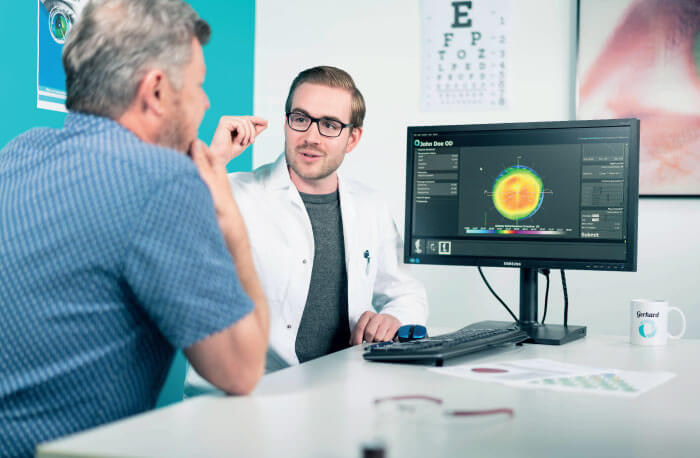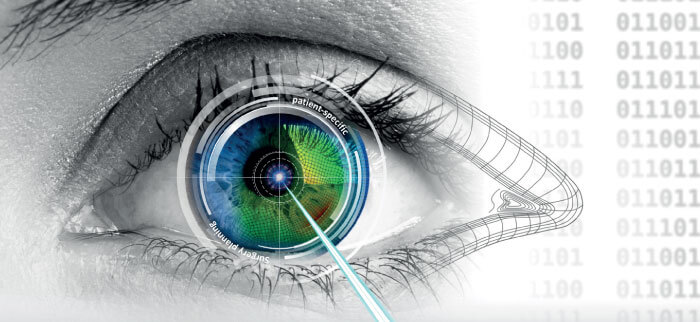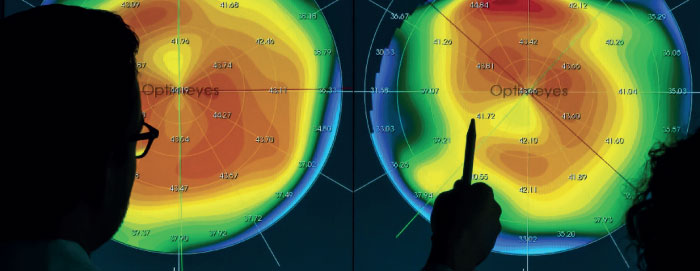
Increasing numbers of cataract surgery patients have been experiencing freedom from glasses following the procedure, but prospects for patients with astigmatism have so far not been optimized. With limited – and often expensive – toric IOL options available, insufficient insurance coverage, and time constraints for surgeons, patients with astigmatism values below 1,75 D had limited options for spectacle independence.
Is there a need to correct low astigmatism values? According to Hannes Kraker, ophthalmic surgeon from Augenklinik Paracelsus Medizinischen Privat-Universitӓt in Salzburg, Austria, patients with astigmatism of 0,75 or higher need their eyesight corrected. He also notes that astigmatism values can actually increase following cataract surgery. In the absence of ideal solutions according to the high expectations for patients with astigmatism below 1,75 D, surgeons have had to look for new options for this patient population, when aiming to give them the best possible vision outcomes and minimize distortion, especially in dim light conditions.
What possibilities exist? Femtosecond lasers in cataract surgery are a safe and reliable option; as Kraker explains: “FLACS are very precise, reliable and a great benefit to both surgeons and patients. I believe that intra-stromal incisions are the easiest and most efficient way of correcting low astigmatism and making
sure patients don’t have to rely on glasses.” With biomechanical analysis expertise growing, ophthalmic specialists realize that every eye is different, and that there is a need for specialized individual treatments.
Optimeyes, a software solution from Optimo Medical, offers the ability to digitally image the cornea of every eye thus obtaining precise calculations to choose the right treatment – for every patient. Kraker says, “In the past, we had no possibility of obtaining a detailed digital image of the cornea, and we had to make clinical decisions based on very few images and measurements. With the new digital capabilities of the Optimeyes system, we have made great progress in predicting and achieving much better outcomes for patients with astigmatism.”
Kraker’s team started using femtosecond lasers at the early stages of the system’s adoption in Europe, but they found outcomes varied from one eye to another. Despite developing various nomograms – based on age, astigmatism values, and other parameters – calculations were not precise enough to ensure the required visual enhancement. It all changed when the team discovered Optimeyes and began using precise, personalized predictions for every patient. At the same time, the clinic helped further development of Optimeyes by providing essential input.


The system uses deep corneal understanding developed by Optimo Medical experts, as well as specialized algorithms, to process topography measurements of the patient’s cornea to build a virtual model of the eye – a digital eye twin – and takes relevant surgical parameters into consideration. It then simulates the surgery, using various parameters to arrive at the result that gives the patient the ideal astigmatism reduction. Kraker values the new capability: “As every eye is unique – even the eyes of one patient – the opportunity to digitally recreate corneal behavior, and offer personalized calculations and predictions is invaluable. It is the best way to achieve desired outcomes for our patients.”
The system is intuitive and easy to use, with a clear user interface. “I just import the patient’s data into the software, and select the simulation mode with one click,” confirms Kraker. “The data is then anonymized and sent to Switzerland for immediate simulation. The anonymized results are available very quickly, readyfor the input into the femtosecond laser. Overall, it is a very efficient and userfriendly process.” Various areas of medicine are moving into “in silico” (digital model) experimentation and digitalization, because such tools allow clinicians to predict outcomes more accurately, and minimize procedure risks.
The Optimeyes digital eye twin has the potential to be used as a virtual model for surgical procedures in many different ocular conditions. As for patients with low astigmatism values, Kraker concludes, “I think every patient with mild astigmatism would benefit from this software being used to plan surgery. I can also see a possibility of correcting higher levels of astigmatism in the future.”
For more information, please attend the Optimeyes satellite meeting at ESCRS on Sunday, September 15, 2019, where users will share their experiences and attendees can see Optimeyes in action. To attend please email ESCRS@optimo-medical.com

